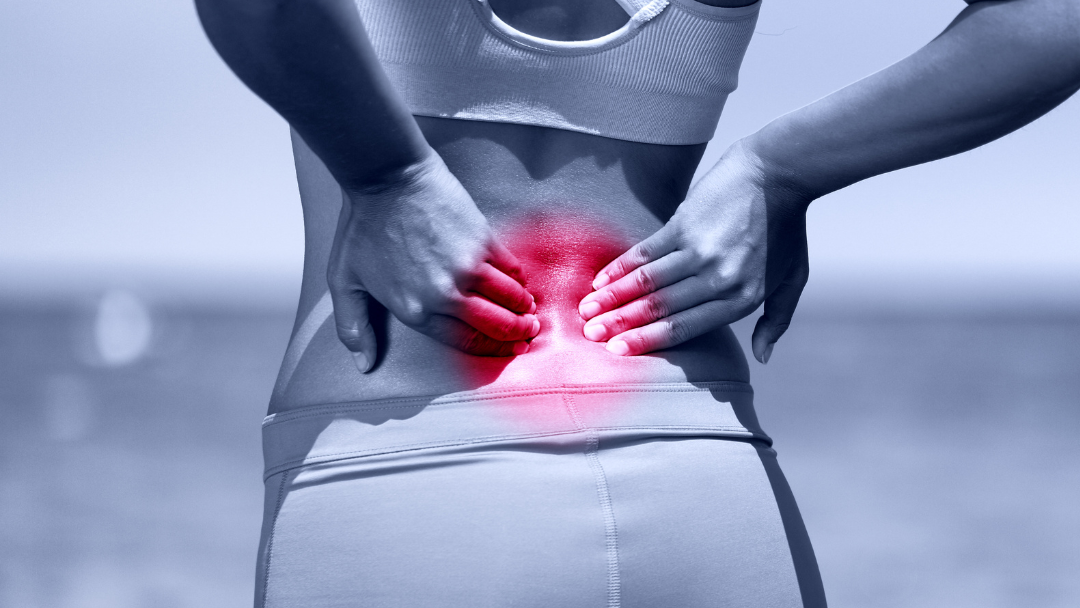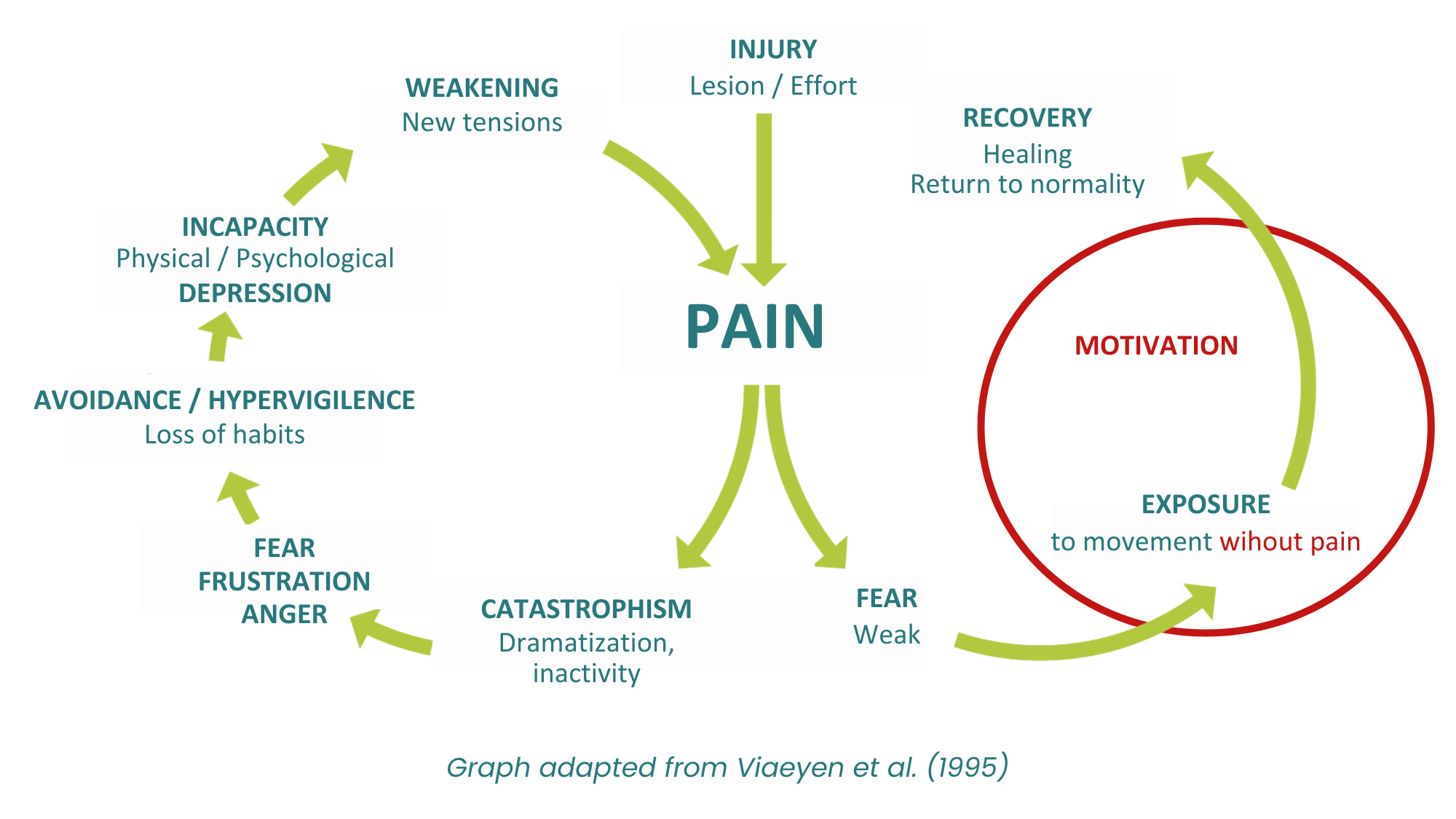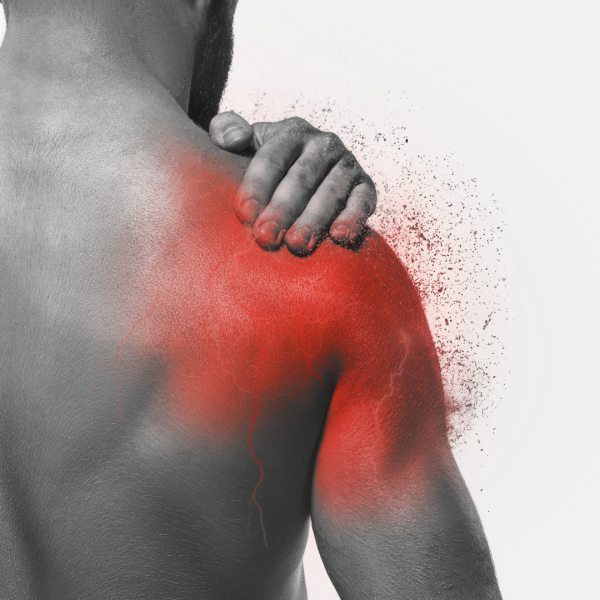Pain is a universal experience, the body’s alarm signaling injury or degenerative change. But what we do with that pain can propel us either into a virtuous circle towards healing, or into a seemingly endless vicious circle.
Picture this: an injury occurs, and with it, pain. The first reaction is often to try to soothe it, sometimes through medication. But if the pain persists, if it becomes chronic, the trap can close.
In the first instance, when there is persistent pain, it is always advisable to carry out a clinical assessment, sometimes accompanied by radiological examinations and other tests, in order to establish a diagnosis and define an appropriate therapeutic treatment.

The Infernal Cycle of Pain
It’s not uncommon for fear to set in when we’re in pain. Fear of pain that seems insurmountable, that limits us, that takes away our freedom of movement. Frustration mounts. We feel powerless in the face of this pain that pursues us, that haunts us.
To avoid pain, we avoid movement. We lock ourselves into kinesiophobia, a pathological fear of movement. Every movement becomes a potential source of pain, every step an ordeal.
This avoidance of movement leads to a loss of normal movement habits. Our muscles atrophy, our flexibility diminishes. We become physically and psychologically incapable of performing simple everyday gestures.
And the pain persists, even intensifies. We seek refuge in anti-inflammatory drugs, in the illusory hope of relieving our pain. But these drugs merely mask the symptoms, without addressing the source of the problem.
Immobility & Muscle Loss
“It’s interesting to note that 80% of patients suffering from osteoarticular problems have reduced muscle mass. The link between immobility and pain is therefore undeniable.”
Philippe Garrel “Sport et capital osseux” published in “Sports et Vie” magazine, March 2003
Breaking the Vicious Circle
So, how do we break the vicious circle of pain? The answer lies in movement. It’s paradoxical, but movement can be the key to overcoming pain

Finding ways to move
Finding ways to move without pain, whether through adapted exercises, physiotherapy, exertherapy or even gentle activities such as walking or swimming, can be the first step towards recovery.
When we start to move, and the pain diminishes, something magical happens. Motivation increases. We’re more motivated to get moving, to get on with our lives. And with this resumption of activity comes a reduction in dependence on anti-inflammatory drugs. We discover that our body has the power to heal, that movement is our ally in this battle against pain.
Pain-free movement: the importance of specialized machines
Pain-free movement is made possible thanks to specialized machines that have been fine-tuned to each individual’s specific needs.
By modifying the amplitude and weight of exercises, these machines enable physical effort to be adjusted to minimize discomfort. The idea is to isolate muscles as much as possible in order to strengthen them progressively. This targeted strengthening is based on a personalized program drawn up on the basis of a musculoskeletal health check.
By gradually increasing amplitude and weight, each movement is optimized for pain-free efficiency, promoting gentle rehabilitation and improving overall fitness without aggravating existing pain.
The Power of Endorphins, a significant effect on fitness
Sport triggers the release of endorphins, neuropeptides produced by the central nervous system and pituitary gland, often referred to as “happy hormones”. These substances diminish pain perception by binding to opioid receptors in the brain, providing a sense of well-being and reducing joint pain. In addition, other neurotransmitters such as dopamine and serotonin, released during exercise, contribute to mood regulation and pain management.
Regain Confidence in Your Body
Movement helps reduce the fear of moving. By regaining confidence in our bodies and discovering that movement can be beneficial and painless, we break the cycle of kinesiophobia.
Restore strength and flexibility
Little by little, we regain our strength, flexibility and ability to move freely. Recovery becomes possible, and with it a return to normality.
Conclusion
It’s time to break away from catastrophism, fear and frustration. It’s time to take back control of our lives, to relearn how to move without pain. For it is in this virtuous circle of movement that true healing lies.
